2020 FHM National Workshop
Raleigh, North Carolina
Nature Research Center, North Carolina Museum of Natural Sciences
February 24-27, 2020
- Welcome to the Workshop Tom Eager, USDA Forest Service, Forest Health Monitoring Program Manager
*** Click on a title for the link to the presentation. A document containing all abstracts is available here. ***
Introduction:
Newcomer Orientation to the History, Purpose, Structure and Current Activities of FHM
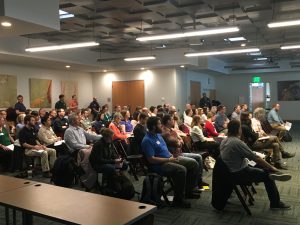
What is FHM? What are we doing? How you can participate
Detection Monitoring Products and Reports
The FHM National Report: Overview of FHM’s annual flagship publication
Meeting Content:
- Welcome to North Carolina Forestry: Local Forest Health Issues Kelly Oten, North Carolina Forest Service
- Plenary Session 1: Demos, New Tools and Technologies, Part 1
- Remote Sensing Technologies that have National Value and Promise – Ryan Hanavan, USDA Forest Service Forest Health Monitoring, Missoula, Montana, and Bruce Cook, NASA Goddard Space Flight Center, Greenbelt, Maryland (Abstract)
- Forwarn II and State Partner Outreach with HiForm – Bill Christie and Bill Hargrove, USDA Forest Service Eastern Forest Environmental Threat Assessment Center, Asheville, North Carolina (Abstract)
- Landscape Change Monitoring Tool: Quick Summary – Kevin Megown, USDA Forest Service Geospatial Technology and Applications Center, Salt Lake City, Utah (Abstract)
- Using ArcGIS Collector and Survey 123 for Forest Health Monitoring – Chip Bates and Michael Torbett, Georgia Forestry Commission (Abstract)
- Plenary Session 2: Demos, New Tools and Technologies, Part 2
- Collecting Data on Trees, Treatments, and Insects: APHIS Use of Collector for ArcGIS to Monitor and Analyze Spotted Lanternfly – Kevin Bigsby, USDA Animal and Plant Health Inspection Service, Plant Protection and Quarantine program (Abstract)
- Unmanned Aircraft System support with forest health monitoring and communication – Tom Eckberg, Idaho Department of Lands (Abstract)
- New Techniques for Forest Health Monitoring Trend Assessments – Joel Egan, USDA Forest Service, Region 1/4 (Abstract)
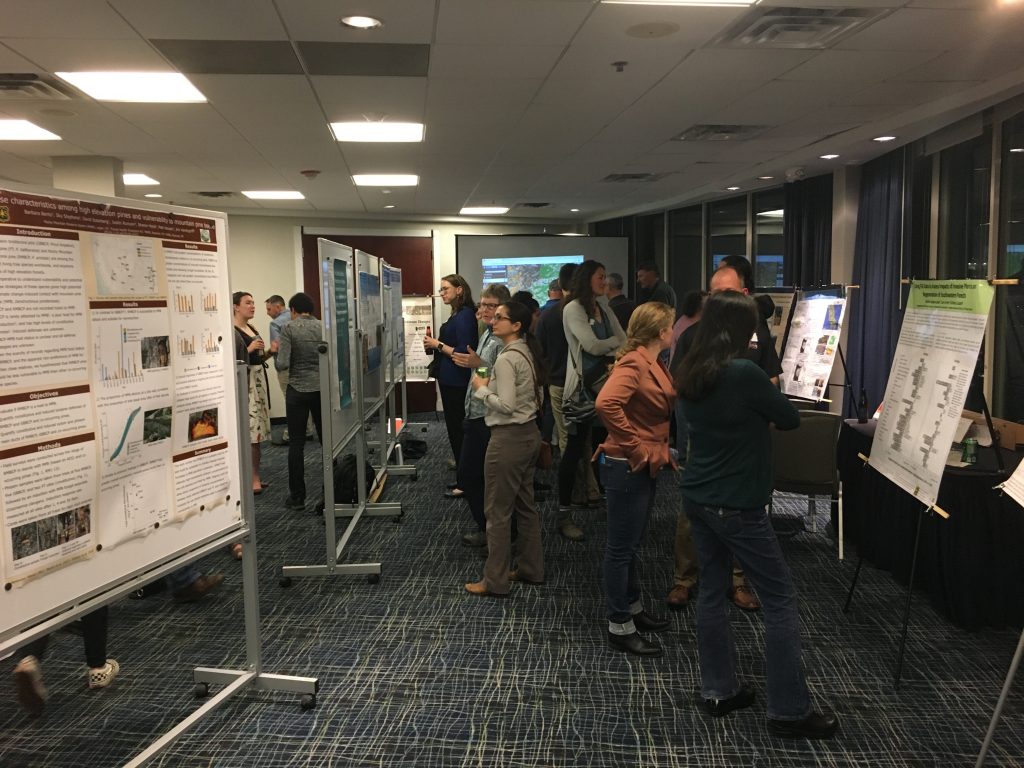
- Plenary Session 3: FHM/FIA Integration (Abstract)
- Data Dashboards East and West – Randy Morin, USDA Forest Service, Northern Research Station (Abstract)
- Case Studies and New Opportunities for using FIA Data in Forest Health Assessments – Andy Gray, Research Ecologist, USDA Forest Service, Pacific Northwest Research Station, Corvallis, Oregon (Abstract)
- Plenary Session 4: Highlights of Evaluation Monitoring Projects
- Population Genetics and Conservation of Carolina Hemlock – Robert Jetton, Camcore, North Carolina State University (Abstract)
- Sugarberry Dieback and Mortality in the South – Mike Ulyshen – USDA Forest Service, Southern Research Station (Abstract)
- Why are Southern Pine Beetles Not So Southern Anymore? – Matt Ayers, Dartmouth University (Abstract)
- Why is the Hardiest Tree in the Southwest Dying? Quantifying the Physiology, Etiology, and Topographic Patterns of Juniper Mortality in the Four Corners Region – Steve Kannenberg, University of Utah (Abstract)
- The Resurgence of Larch Casebearer in the Great Lakes Region – Brian Aukema, University of Minnesota (Abstract)
- Woodboring Beetle Colonization of Conifers Killed by Fire and Bark Beetles: Implications for Forest Restoration and Black-backed Woodpecker Conservation – Chris Ray, Research Ecologist, Institute for Bird Populations (Abstract)
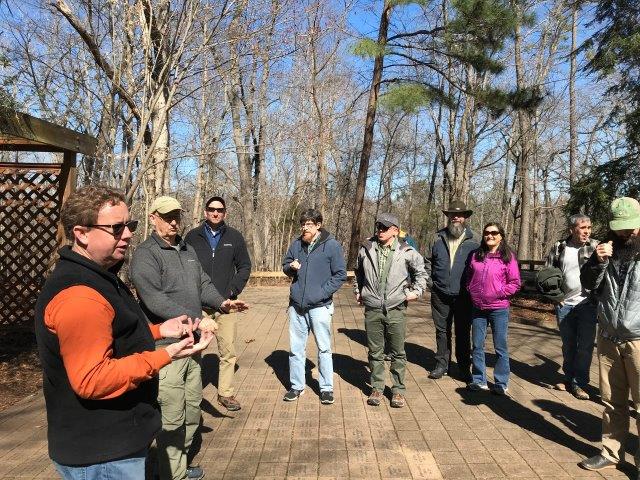
- Plenary Session 5: FHM on the National Forest System: What/Where/How?
- Planning at the Scale of the Challenge: Opportunities to Expand Partnerships between FHM and NFS through Shared Data – Emrys Treasure, USDA Forest Service, Region 8 (Abstract)
- The White Pine Blister Rust Resistance Network for Western 5-Needled Pines – Richard Sniezko, Geneticist, USDA Forest Service Region 6, Dorena Genetic Resource Center, Cottage Grove, Oregon (Abstract)
- Mapping Southern Pine Beetle Hazard Using FIA Data and Opportunities for Updating the NIDRM – Erin Berryman, Forest Health Assessment and Applied Sciences Team (FHAAST)
- Focus Groups with Action Items
- Focus Group 1: Discussion on ADS Standards – Jeff Mai and Tom Eager, Moderators (Abstract)
- Focus Group 2: A Vision for Future FHM Reporting – Barbara Conkling and Frank Koch, Moderators (Abstract)
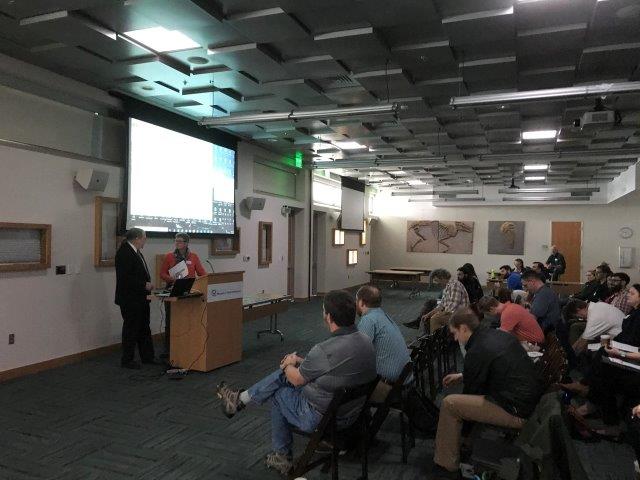
- Plenary Session 6: Citizen-Based Partnerships in Monitoring Forest Health
- Citizen Science Detection of the Spotted Lanternfly – Eric Day, Extension Entomology, Virginia Tech (Abstract)
- Monitoring Invasive Plants and Weed Bio-control Programs – Carol Randall, USDA Forest Service, Region 1/4 (Abstract)
Matteo Garbelotto, University of California Berkeley (Abstract)
- Plenary Session 7: Climate and Forest Health Monitoring (Abstract)
- Forest Health Conditions in Alaska: Recent Observations in a Changing Climate – Jason Moan, Forest Health Program Manager, Alaska Division of Forestry (Abstract)
- Improving the Productivity of Forestlands using Decision-Support Tools – Michael Gavazzi, Program Coordinator, USDA Southeast Climate Hub and Erika Mack, GIS Analyst, USDA Forest Service, Eastern Forest Environmental Threat Assessment Center (Abstract)
- A Forest Health Retrospective: National and Regional Results from 20 Years of Insect and Disease Survey Data – Kevin Potter, Research Associate Professor, North Carolina State University (Abstract)
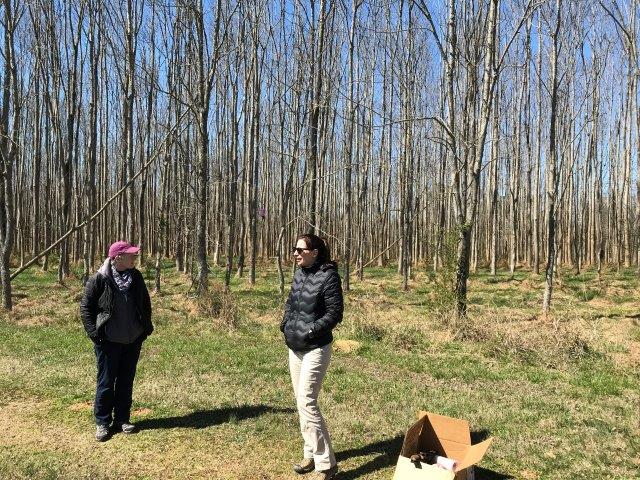
- Poster Presentations
Authors: Sunil Nepal, Shaoyang Yang, Zhaofei Fan, and Martin A. Spetich
Authors: Albert Mayfield, Stephen Fraedrich, Rabiu Olatinwo, and Jaesoon Hwang
Assessing impacts of drought on forests in east Texas: An analysis on tree mortality using FIA data
Authors: Weimin Xi, Mukti Subedi, Ming Yan, Christopher Edgar, Sandra Rideout-Hanzak, and Stephen Clarke
Long-Term Change in Patterns of White Pine Blister Rust in Sequoia and Kings Canyon National Parks
Authors: Joan Dudney, Jonathan Nesmith, Matthew Cahill, Jennifer Cribbs, Dan Duriscoe, Adrian Das, Nathan Stephenson, John Battles
Sudden Oak Death management in southwest Oregon
Authors: Hazel A. Daniels, Sarah Navarro, and Jared M. LeBoldus
Authors: Patrick I. Bennett, Javier F. Tabima, and Jared M. LeBoldus
Author: Richard Sniezko
Authors: Loretta Winton, Roger Ruess, and Gerard Adams
Authors: Andrew Whittier, Robert M. Jetton, Gary R. Hodge, Kevin M. Potter, Albert E. Mayfield, and Rusty Rhea
Decline in Pacific madrone (Arbutus menziesii): Assessing health & future persistence using common garden sentinel tests
Authors: Laura E. DeWald, Renata Poulton Kamakura, Richard A. Sniezko, Marianne Elliott, Gary A. Chastagner
Effects of mountain pine beetle outbreaks on lodgepole pine forests in the Intermountain West
Authors: Christopher J. Fettig, Brytten E. Steed, Carl L. Jørgensen, Joel M. McMillin, Leif A. Mortenson, A. Steve Munson, Jose F. Negrón, Justin B. Runyon, Kenneth E. Gibson, and Jackson P. Audley
Defense characteristics among high elevation pines and vulnerability to mountain pine beetle
Authors: Barbara Bentz, Sky Stephens, David Soderberg, Justin Runyon, Sharon Hood, Matt Hansen, and Jim Vandygriff
Climate and balsam woolly adelgid damage in the Northern US Rocky Mountains
Authors: Jeff Hicke, Bingbing Xu, Gina Davis, Laura Lowrey, Tom Eckberg, Erika Eidson, Amy Gannon, and Danielle Malesky
Using FIA data to assess impacts of invasive plants on regeneration of Southeastern forests
Authors: Adrian Lazaro-Lobo, Gary Ervin, and Rima Lucardi
Authors: Zoe Schapira, Camille Stevens-Rumann, Donna Shorrock, Chad Hoffman, and Amy Chambers
Monitoring the distribution, patterns, mechanisms and impacts of Rapid ‘Ohi’a Death in ‘ohi’a-dominated forests of Hawaii Island.
Authors: Flint Hughes and Sheri Smith
Tree vulnerability to extreme drought and concurrent bark beetle outbreaks: Evidence from the 2012—2016 California drought
Authors: Charlotte Reed and Sharon Hood
Woodboring beetle colonization of conifers killed by bark beetles vs. wildfire
Author: Chris Ray, Daniel R. Cluck, Robert L. Wilkerson, Rodney B. Siegel, Angela M. White, Gina L. Tarbill, Christine A. Howell, and Sarah C. Sawyer
Status and trends in forest pest damage from recent aerial detection surveys
Authors: Whalen Dillon, Jeanine Paschke, Mark Zweifler, Sheryl Romero, and William Monahan
An assessment of tree crown health in forested wetlands of the Midwest
Authors: Colton Arnspiger, Frank Krist, and William Monahan
Airborne hyperspectral data application in health stress detection of ash trees
Author: Catherine Chan, Peter Nelson, Daniel Hayes, and Ryan Hanavan
Authors: Spencer Stout and Brian Aukema
Direct and indirect effects of warming on larch casebearer outbreaks
Authors: Samuel F. Ward, Songlin Fei, Andrew M. Liebhold, and Brian H. Aukema
Reconstructing emerald ash borer-induced mortality pattern in Arkansas
Authors: Benjamin Walters, Dalton Weatherly, Mohammad Bataineh, and Stephen Clarke
Authors: Karen Hutten, Robert Kennedy, Justin Braaten, and Peter Clary
Landscape Change Monitoring System: A time machine for mapping landscape change
Author: Kevin McGown
